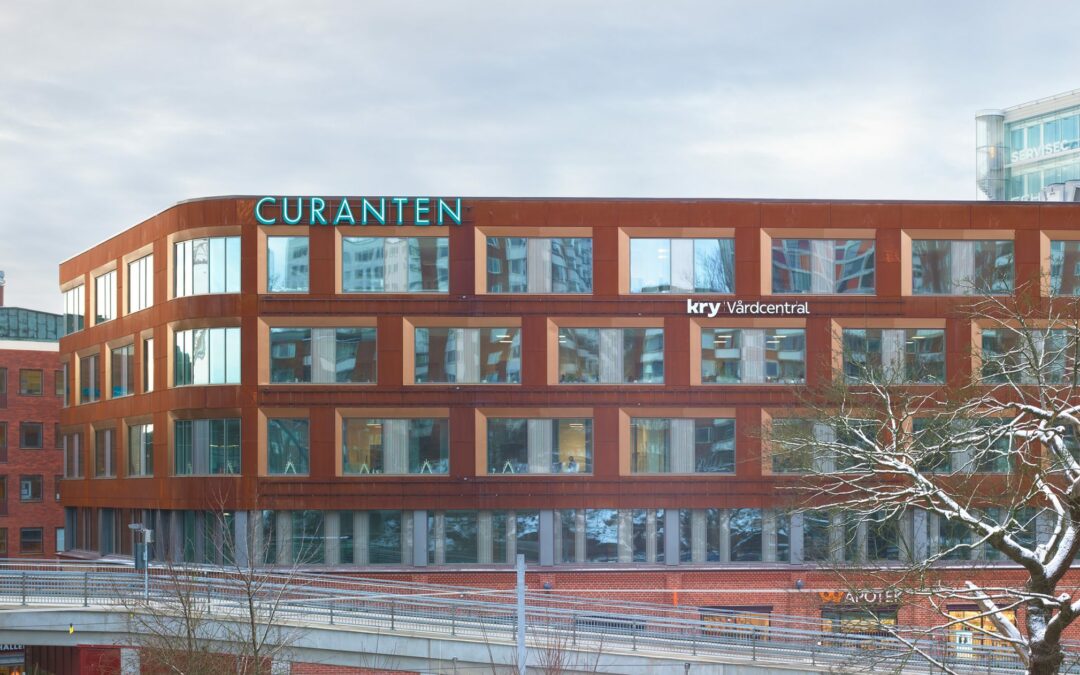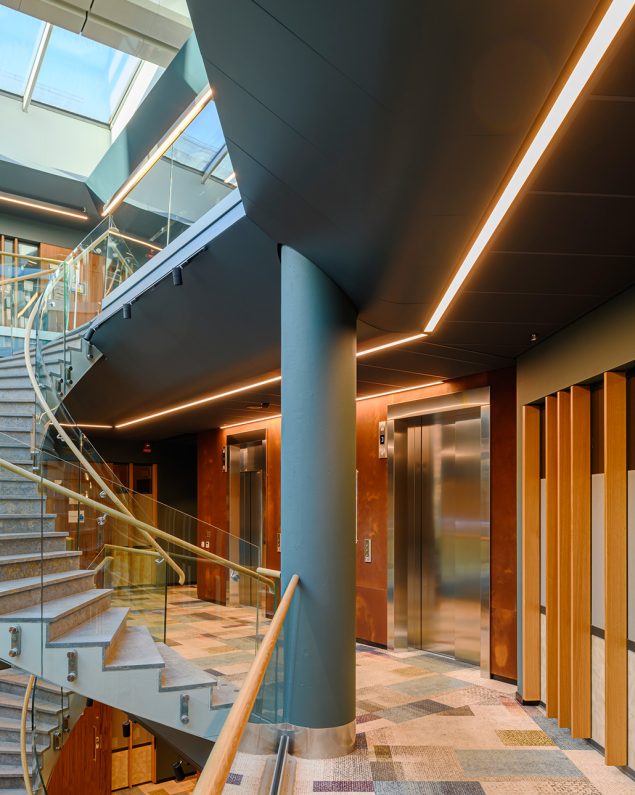A holistic view of healthcare design from Gustafs Stories
Curanten is a pioneering healthcare facility in Stockholm designed by architects BAU Stockholm. With a focus on integrated services and disease prevention, not to mention innovative materials, it is changing the face of how healthcare facilities look and feel.
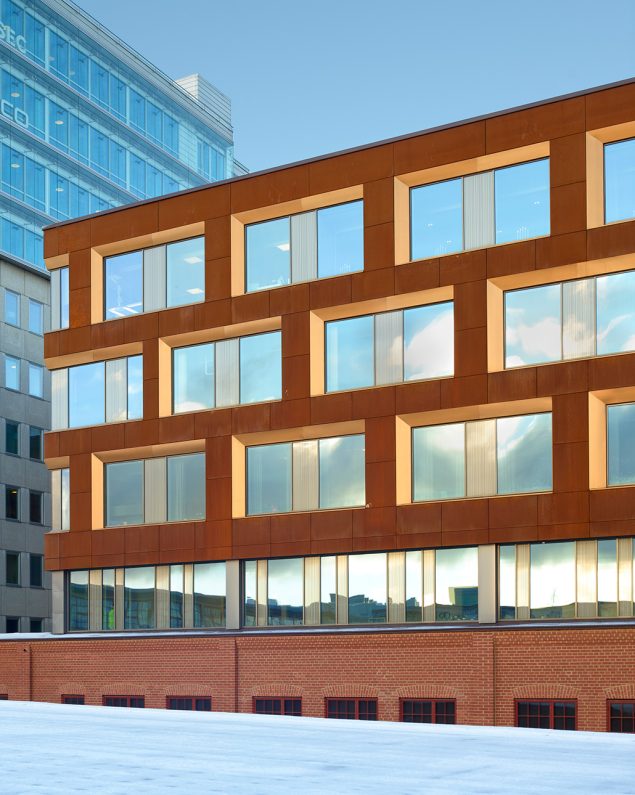
CORTEN STEEL - Industrial Influence
The Curanten healthcare facility is located in an area of Stockholm called Sickla and is a benchmark for the sector. Its design, by Swedish practice BAU, takes its cues from the area’s industrial heritage. The building consists of a two-storey base partly constructed from the original factory that once stood on the site. Retail spaces now occupy these floors.
Above these floors sits a modern building clad in Corten steel, a material chosen to give a nod to Sickla’s past and gives a connection to the brick of the original structure. “It’s obvious that there’s something new happening here. That the building has a new use,” explains Hans Birkholz, one of BAU’s founders, adding that the developer Atrium Ljungberg, were clear from the beginning that they wanted this scheme to be of a higher quality than a typical healthcare setting.
Photo: Max Plunger
CONSCIOUS CHOICES - Many disciplines all under one roof
At Curanten there is a much more joined up approach to healthcare with facilities including a health centre, childcare and maternity care centres, dentists, physiotherapists, dieticians and gyms all in one place. “There are spaces for both small and large organisations and tenants,” says Birkholz, “The idea was always to become a building for many different ‘actors’ in health. Most of the tenants want to be in Curanten because they also have an idea of how healthcare can be a different experience: they are conscious with their choices of interiors. We didn’t feel that we needed to dictate what they do with each unit: that would have stifled development and not given the tenants enough freedom. However, our design joins in all together through the communal areas.”
Photo: Devis Bionaz
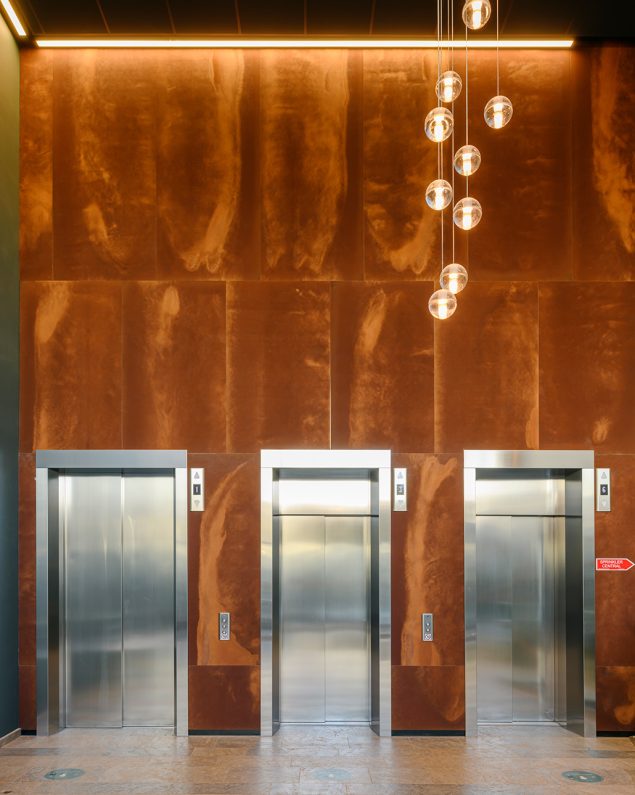
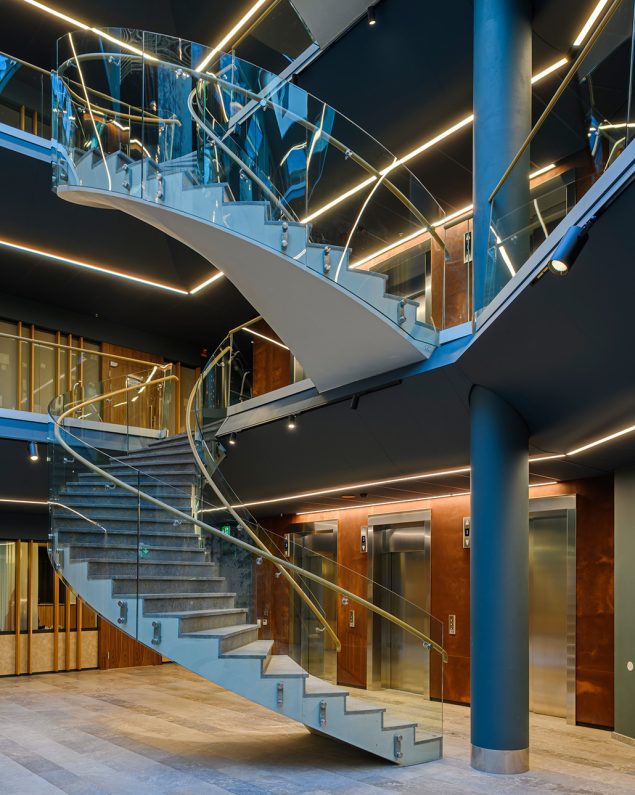
PRACTICAN YET INSPIRING - Inspired by hotels, not hospitals
“That’s why the atrium is so important. It’s the connecting ‘heart’ of the building,” he continues. Designing the atrium, it was important for us to avoid a white ‘clinical’ look. We wanted to allude to hotel interiors more than hospital interiors.” This is clear in the materials used: carpets, lots of wood including solid timber ribs and low lighting. “We were able to overcome the challenge of adhering to the demands of a healthcare setting by using inspiring materials that still meet the demands of hygiene, cleanability and maintenance.” For example, acrylic sheets with pressed leaves in the middle incorporates nature, but is a wipe-clean surface.
Photo: Devis Bionaz
FOCUS ON WELLBEING - Future healthcare design
When it comes to future healthcare design, there is scope for a new mindset. Some areas of healthcare facilities – such as waiting rooms or corridors – can and should have more of a focus on wellbeing Birkholz argues, rather than a completely clinical feel that is necessary for spaces like operating theatres. “The interiors will be more ‘cared for’,” he says, “These will be spaces that people even want to spend time in.”
Staff, patients and visitors alike will feel better, thanks to interiors focused on harmony and comfort. From materials to lighting, we are likely to see more healthcare settings that promote wellbeing and holistic approaches, like Curanten.
Photo: Devis Bionaz

